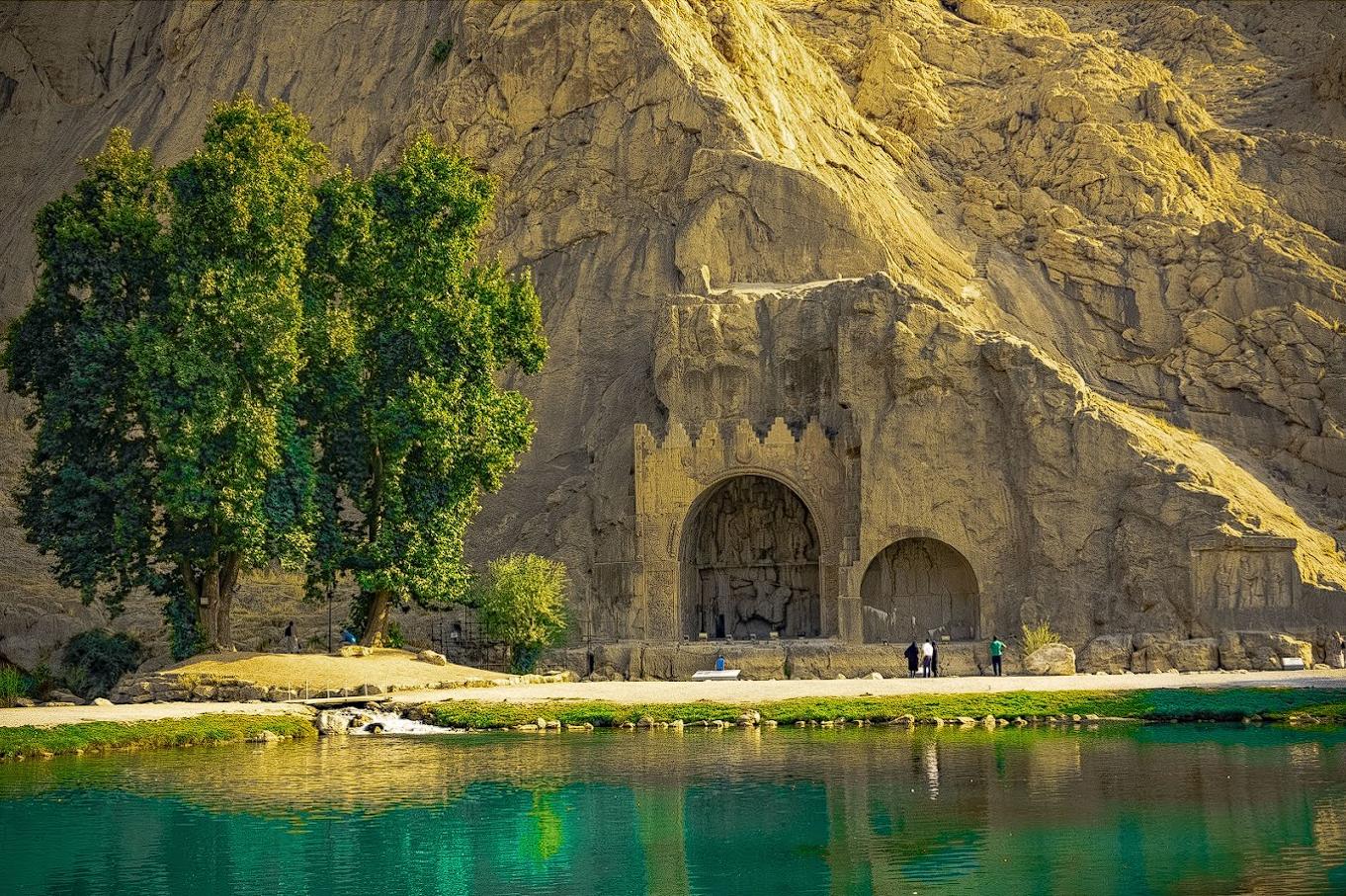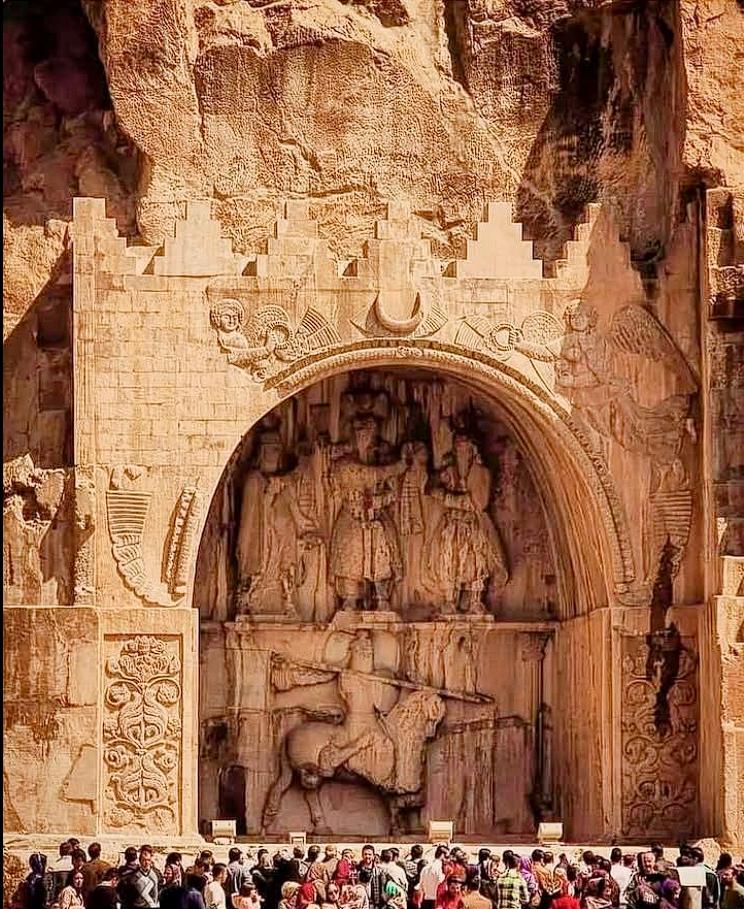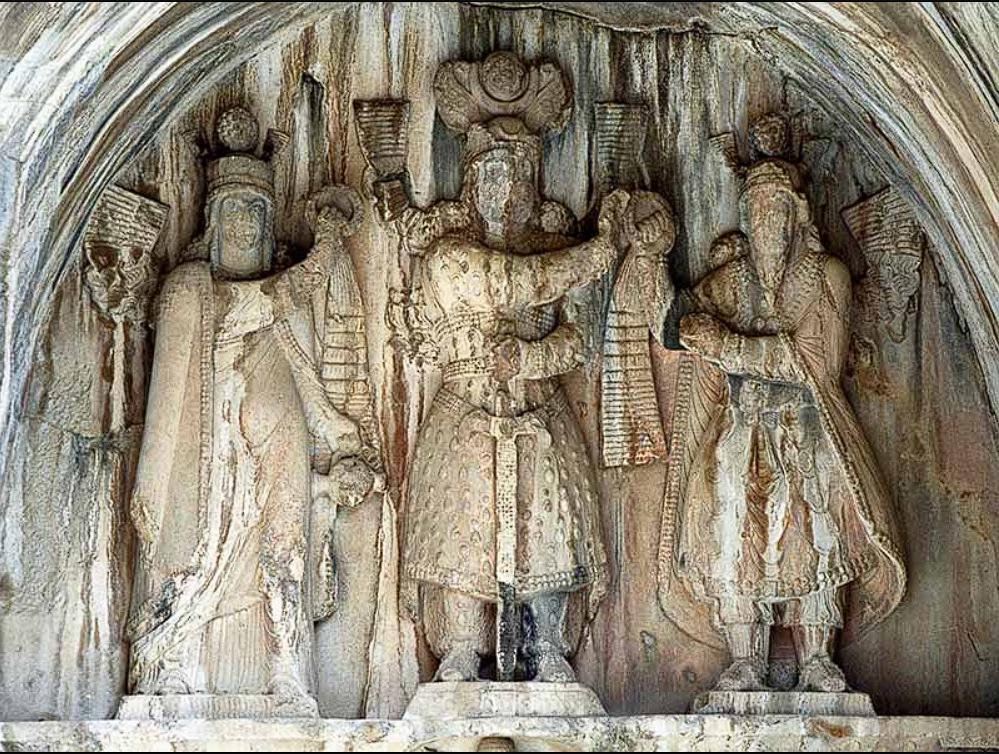Taq-e Bostan: The Stone Legacy of a Sassanid Empire
Tucked into the craggy embrace of the Zagros Mountains, just outside the Iranian city of Kermanshah, lies a forgotten theatre of stone and kingship—Taq-e Bostan, or the “Arch of the Garden.” Far more than a beautiful name, this ancient site is one of the greatest rock reliefs of the Sassanid Empire, carved to proclaim glory, power, and divine right.
Dating from the 3rd to 7th centuries AD, Taq-e Bostan is not simply an artwork—it is a stone archive of imperial ideology. Its carvings speak volumes, telling stories of battles, coronations, gods, and greatness in the language of chisels and cliffs.
The Iwan of Khosrow II: Power in Stone
Dominating the site is the Iwan of Khosrow II, a grand stone alcove that functions like a stage—framed by arches, shielded by rock, and watched by time. At its center, carved with regal symmetry, stand three monumental figures: King Khosrow II flanked by the Zoroastrian deities Ahura Mazda and Anahita.
Their presence isn’t decorative—it’s political. This tableau asserts a cosmic alliance between king and gods, branding Khosrow’s rule as divinely sanctioned. Such messages were crucial in an empire built on faith and fire.
Khosrow II on Horseback: A Warrior King Eternal
Below the divine coronation, a scene of equal majesty unfolds: Khosrow II astride his warhorse Shabdiz. Both man and beast are sheathed in intricate armor, rendered with such lifelike detail that the silence of the mountain seems to echo the distant beat of hooves.
This is more than sculpture—it is imperial propaganda, a visual symphony of strength, nobility, and unshakable rule. Even today, the level of craftsmanship stuns archaeologists and travelers alike. You don’t just see the king—you almost feel his presence.
Taq-e Bostan: Where Art Meets Empire
Unlike many ancient reliefs hidden in tombs or temples, Taq-e Bostan was built to face the world. Set along a royal route used by Sassanid kings, it was meant to impress, to endure, and to speak across centuries.
Its walls host more than just Khosrow. Earlier kings like Ardashir II and Shapur III also appear in nearby panels, offering a dynastic gallery in stone. Hunting scenes, ceremonial poses, divine symbols—all carved in exquisite high relief—form a tapestry of empire and identity.
Taq-e Bostan was not just decoration. It was declaration. A way for kings to outlive their reigns, to shape memory through monument.
Legacy in the Mountains
Today, Taq-e Bostan stands weathered but unbroken, its messages still legible to those who listen. It is a masterpiece of Sassanid art, and a silent testament to an age when gods and kings shared the same stage.
For historians, it provides rare insight into the visual language of ancient Iran. For visitors, it offers awe—the kind that comes when stone whispers the secrets of empire.

CÁC TIN KHÁC
Mary Walton: The Forgotten Inventor Who Helped Clean Up America’s Cities
Tomb of Queen Nefertari in the Valley of the Queens, Egypt
Discover the Hypostyle Hall of the Temple of Hathor at Dendera
Venus de Losange: Unveiling the Mystery of a 20,000-Year-Old Paleolithic Icon